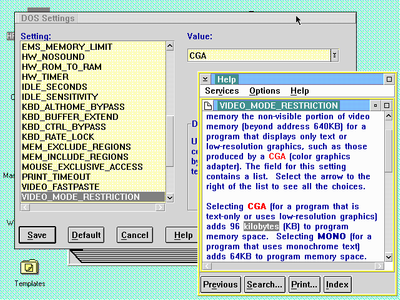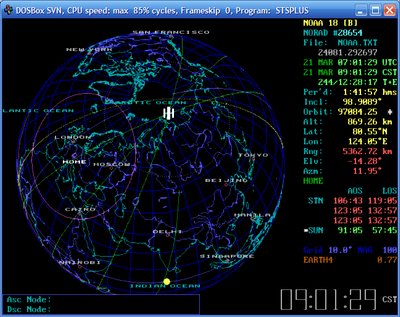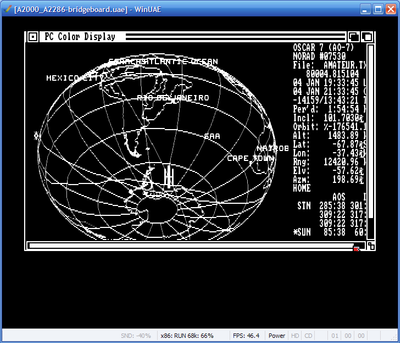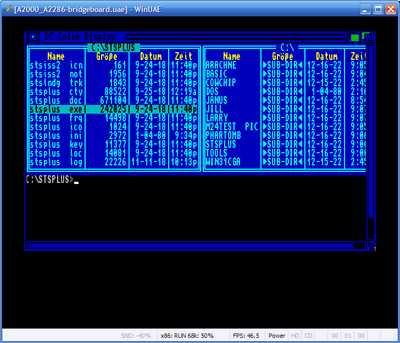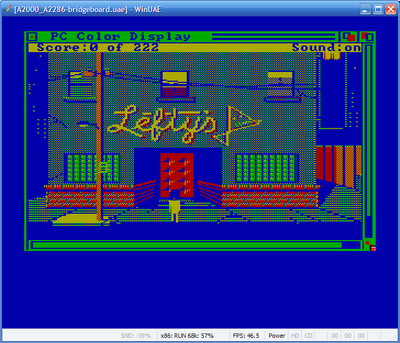bobsmith wrote on 2024-03-21, 13:06:
I've noticed the Amiga fascination is most common in Western Europeans.
I suppose it was related to Commodore Germany somehow?
Nintendo was also being popular here, with its then-new Europe headquarters in Großostheim.
The Commodore 64 became something like the computer equivalent to the VW Beetle, for example.
It reached a cult status within just a few years, even when it was still being sold as new.
In East Germany, it was the wet dream of teens and adults, too. They were being desperate for it. An Amiga was unimaginable to them.
("Which kind soul from West Germany can give me a C64 for free ?" were printed in Funkamateur magazine and other magazines)
For the Amiga 1000, there was a big show or presentation going on in Frankfurt in 1986.
It tried to demonstrate how awesome the Amiga is and what it can do.
https://www.youtube.com/watch?v=z_m-9PLanp0
And it really was fascinating for 1985 hardware, I admit. The A1000 was awesome.
In an era when kids didn't have ever played an original NES yet (Europe release 1986), it was mindbogglingly.
A far cry to a ZX81 or ZX Spectrum.
Or an IBM PC clone with 256KB RAM, 5,25" 360KB drive, CGA and MS-DOS 2.11.
Insofar I can understand that the Amiga community fights for acknowledge and the Amiga's place in history.
In a time when people still had funny hair cuts and were wearing cotton sweatshirts in all sorts of colour, this was just awesome.
Considering that some citizens (esp. teens and students) still had b/w portable TVs in their bed rooms at the time.
But by 1990, VGA resolution and 256 colours were becoming something of a norm.
The then-new Macintosh models had begun to adopt 640x480 pels as a new standard resolution, too.
Previously, they were using 512x384, albeit mostly in monochrome for the longest time.
bobsmith wrote on 2024-03-21, 13:06:
Why was the Amiga not popular in the US or other countries?
Some parts of the Amiga culture that started there and evolved beyond it like trackers got pretty popular here at least in terms of nerd crowds, but I've never heard or read of the Amiga being popular in the US.
I don't know, I can only guess. For one, I think that PCs in the US were more modern at an earlier moment in time.
- I'm thinking of those later Tandy PCs with their cheap VGA monitors right now, but maybe that's rather sort of a stereotype, not sure.
The citizen over there did have access to CD-ROMs and modern shareware much earlier or so it seems.
A lot of English language software had used EGA and VGA modes, at least.
Internet archive has quite some collection of vintage shareware CDs from the US, at least.
Here in Germany by the turn 1989/1900, we had a lot of old clunkers still sold newly when they were basically being obsolete for half a decade.
Not that modern hardware wasn't being sold, the contrary, it was. Businesses and universities usually had modern tech.
But the average Joe was apparently very conservative here and didn't see the point in a contemporary PC model.
When MS-DOS 5 was around, quite a few PC users seem to have stuck with MS-DOS 3.20 still, for example.
And had XTs, of course. Turbo XTs, in best case. I'm not sure if they were ignorant of just didn't care about progress. 🤷
Edit: Or they all secretly played their favorite games on their Atari STs instead ? 😁
Users of telecommunications software, MS Windows, office games (playing golf, strip poker or MS Flight Sim) and weird hobbies excepted here, of course.
They apparently saw the use of VGA early on and had bought cheaper VGA hardware from 1990 onwards (VGA clones, blurry no-name 14" VGA monitors).
That's what my prior experience says, at least. I'm speaking under correction, of course. Not all users were same, after all.
But to give an idea, one of my favorite electronic books was from 1990 and uses an 4,77 MHz XT w/ v20 and Hercules as a reference.
It's what the author had used at home, apparently. For years, maybe. Assuming work on the book had started in the late 80s.
Still, it at least acknowledges the existence of ATs and "hi-end" 386 PCs. And EGA/VGA.
AdLib and Sound Blaster apparently were never being heard of yet,
otherwise they would surely have been being mentioned as a fancy programmable tone generator (OPL2)
or D/A and A/D converter (SB DAC/ADC), respectively.
The author also mentioned the term "Gurken-Standard" in one occasion, which I had never heard before.
Calling something a "Gurke" (engl. cucumber) was synonymous to referring to something being a lame duck or slow dog, I suppose.
The term apparently was being used by some IBM PC users of the day (not the author) to describe a slow standard PC in a derogatory way (the original IBM PC and clones).
So there must have been users who had realized that the IBM PC wasn't being a high technology anymore. Math teachers excepted, of course. 😁
Which is quite reassuring, I think. Because when I was young(er), I always wondered about the outdated specs mentioned in the book.
Because, I started with a 12 Mhz 286 PC with VGA. Something to be considered sort of a DOS baseline configuration throughout the 90s.
An 4,77 MHz model already was considering being a museums piece before I was being born (almost, a bit exaggerating here).
That being said, Hercules and 5,25" floppy format were still being around in early-mid 90s.
The Hercules card, too, as an MDA card alongside developer PCs w/ VGA, to run their debuggers.
_
Here's a recent discovery of use case for an Amiga 2000 that I've found out about.
It's a promo video for a Disney production, so I assume it's from the US.
https://youtu.be/-_j48O50crQ?t=131
That Amiga apparently was being used occasional to assist artists at drawing certain scenes.
As an aid to the animators, I suppose. So they could visualize things.
(Boy, I really loved that cartoon when I was little/young. ^^)
Edit:
BitWrangler wrote on 2024-03-21, 14:45:
Amiga peaked earlier in the US, prior to mass web use and AGA, so it looks like there was no Amiga scene because it was all on BBS and usergroup disk zines. It was still third behind PC and Mac, but both of those being some third cheaper than they were elsewhere in the world tilted market in their favor. The 1992-1993 486 price war probably had a lot to do with it also... bringing down US 486 entry level pricing, because it really took a 486 with SVGA and win 3.1 to start to feel as nice and responsive to use as an Amiga.
Ah, I see, makes sense. The US apparently had more modem users early on, too.
Here in Germany, a "BBS" was usually being called a computer "mailbox".
We had quite some mailboxes here*, too, but it was very niche in direct comparison to the US, maybe.
My dad for example had rather used Datex-P, a public data network operated by our national telco.
It provided X.25 PADs to the end users with a terminal and acoustic coupler or modem.
Online services like BTX (Datex-J) or CompuServes or Genie could use it, too.
That way, our users could make contact with foreign online services way back in 80s and early 90s,
before the internet/www had been available. That was necessary, because their mainframes were located in the US.
The X.25 link was being available in the B and D links of the ISDN system, too, I vaguely remember.
Alas, ISDN and plain landlines (!) weren't being taken for granted here during early 90s.
X.25 also was being used by banks and point-of-sales systems. Such as ATMs or credit card readers. If there were any, I mean.
Credit cards were like an alien technology here in Germany, too.
(Paying via bank cards or EC cards was technically possible since 70s/80s, but still not all shops/stores accepted them.
Some didn't like the idea to pay for the transactional fee and insisted on customers paying in cash or buying something for 10€ or more.
It needed the pandemic to change this, believe it or not.)
For some weird reason, the telephone network wasn't as good as it should have been.
In retrospect I can now understand why some of the stationed US army people were being angry/dissatisfied for not getting an ordinary phone line (soon).
Their families surely had a need for a landline, to stay in touch with relatives and so on.
All in all I can now better understand why our national BTX service was so darn slow for most of its time.
Even a cozy phone connection via V.23 at 1200 Baud/75 Baud was not being trivial, considering the poor parts in our infrastructure.
*The mailbox scene consisted of a few hundred mailboxes, I assume.
There was a list with phone numbers being mentioned in "BTX Magazin" (later renamed Com Online AFAIK).
Edit: My apologies if I was talking too much again. Please feel free to just ignore what I wrote, I was mainly thinking out loud again. 😅
